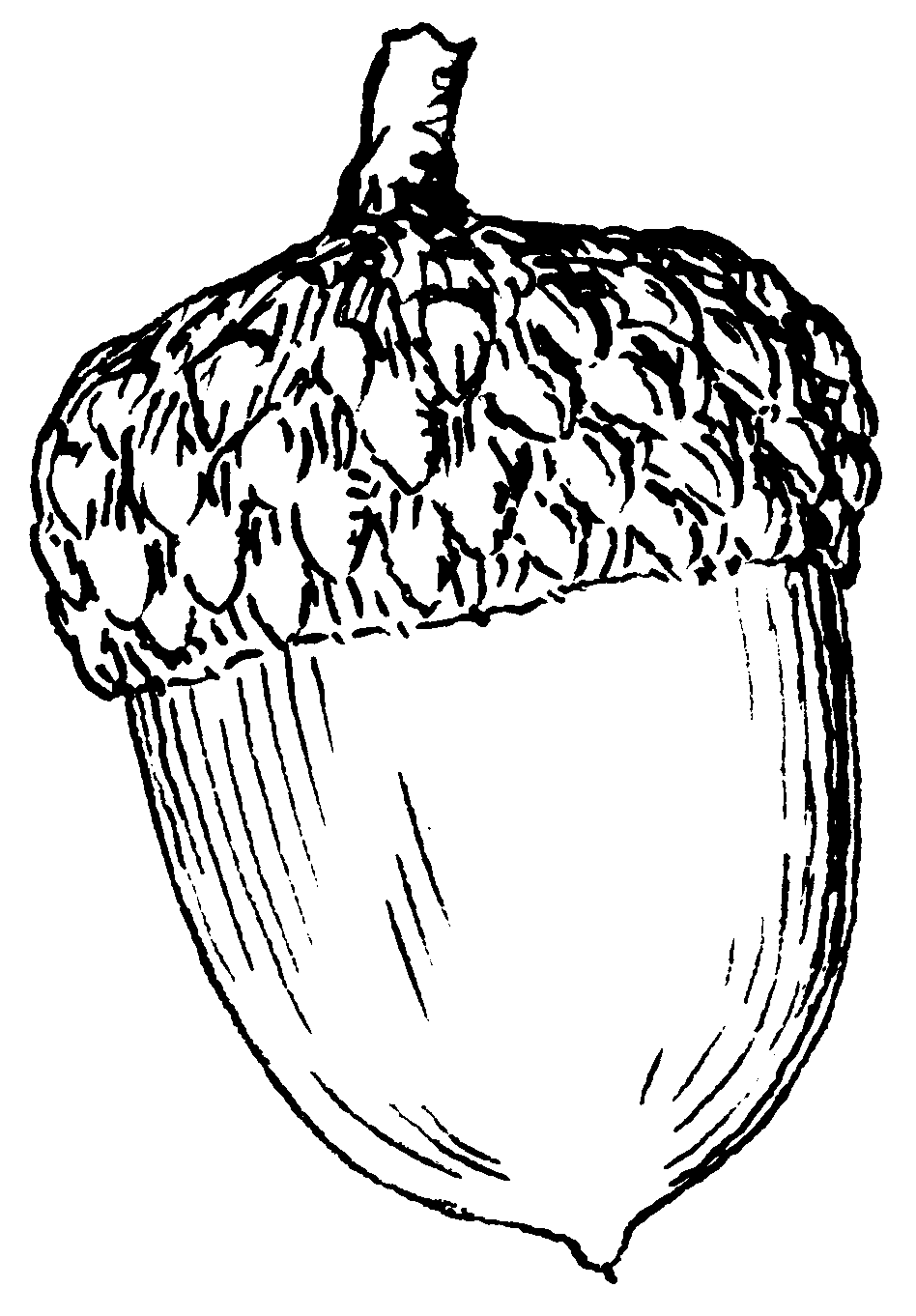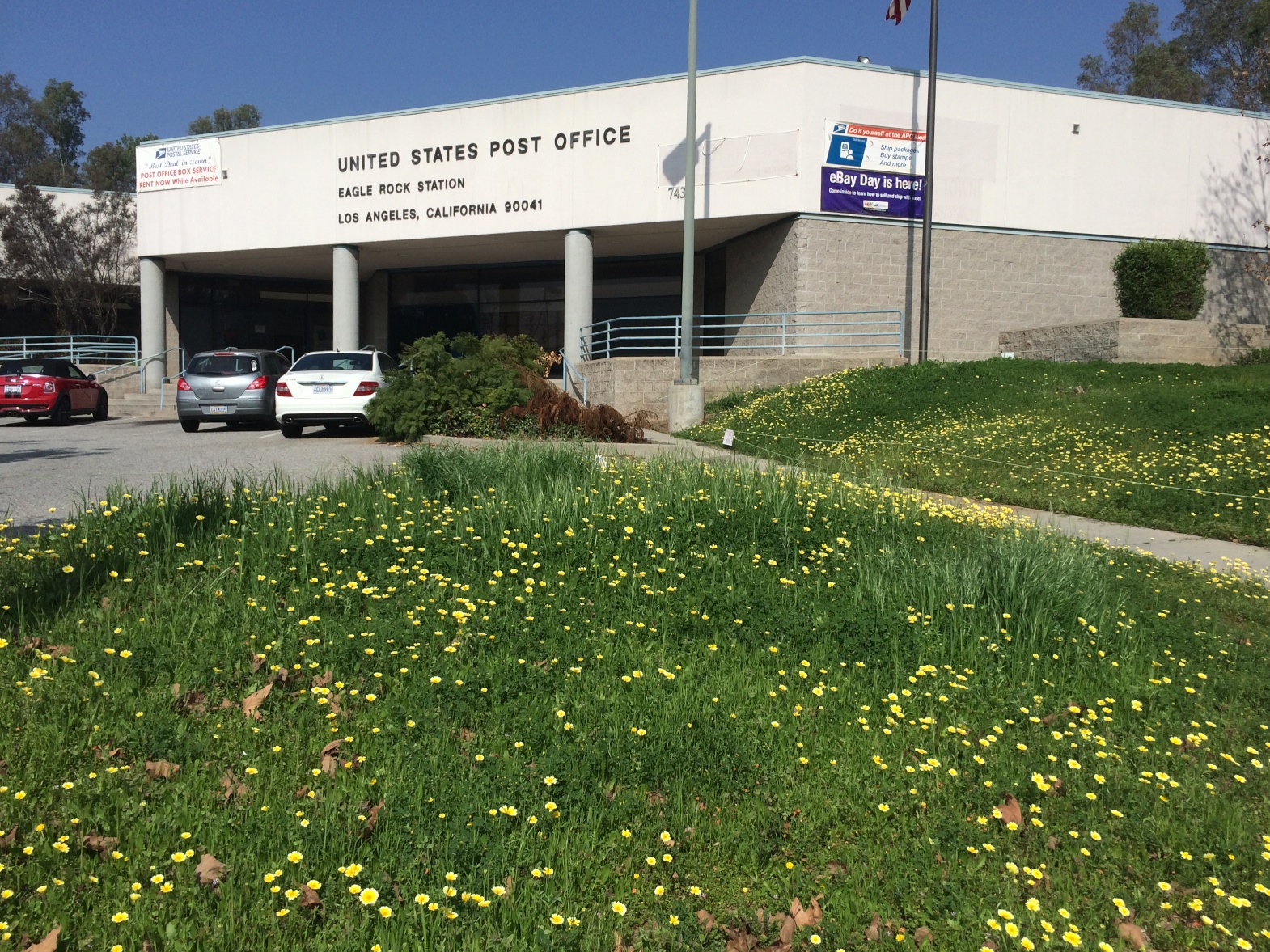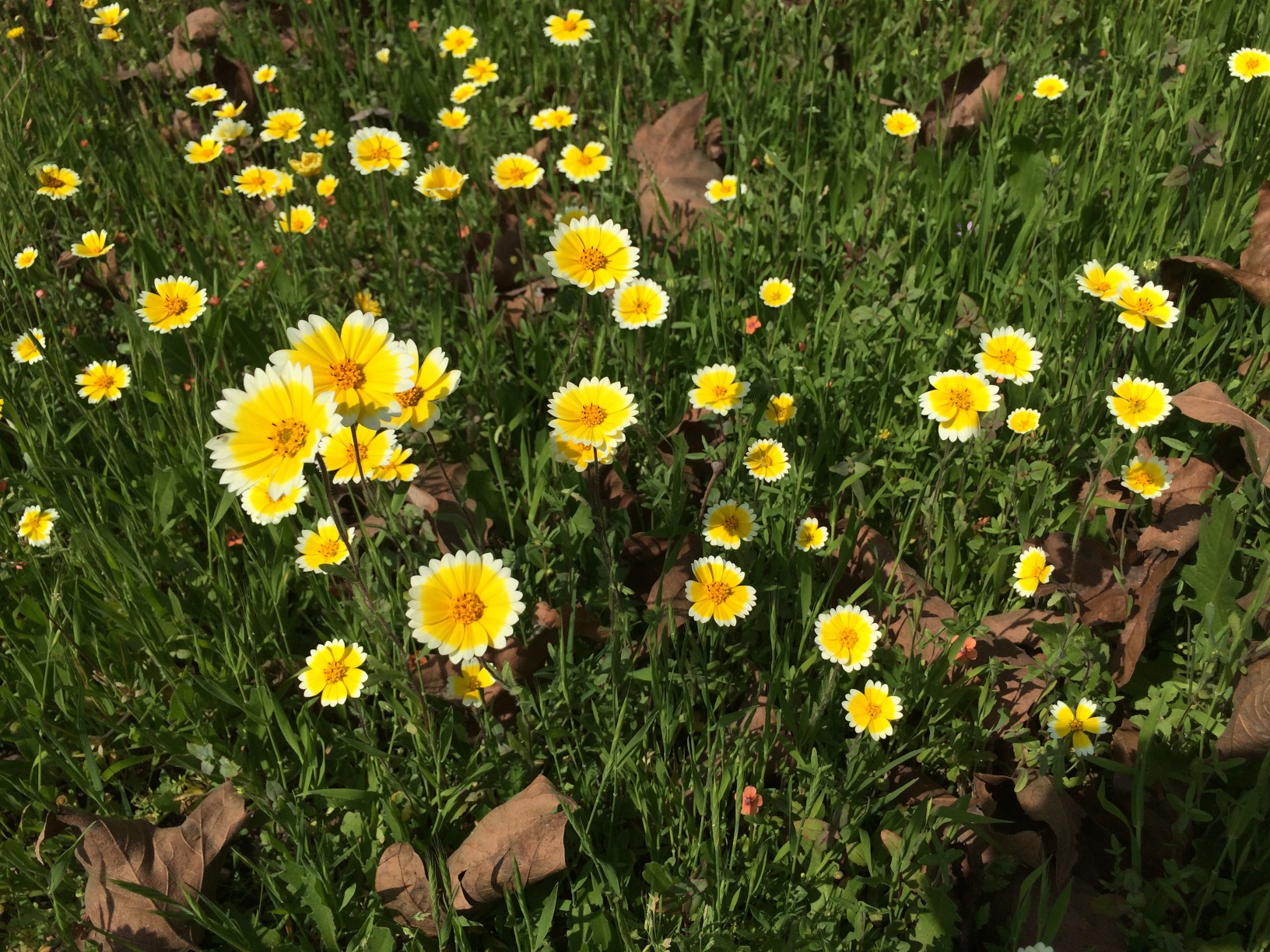Wildflowering
We are so happy to finally have some rain! We have new plants in our "backyard" space and they love it. Rain water is so much better for plants than the tap water used for irrigation -- no chlorine, no minerals, just pure H2O. It also nicely cleans the dust off their leaves (as well as the air, our streets, our cars, etc.). Not to mention -- it's free!
Rain is also a very necessary component to the germination and blooming of wildflowers. Since we've had so little precipitation this winter, we probably won't be getting much of a show in some of the well-known wildflower areas, like the Poppy Reserve in the Antelope Valley, this spring. Nevertheless, Theodore Payne Foundation will be updating it's Wildflower Hotline every weekend from March through May. It's worth taking a look.
Here in Eagle Rock, we have our own wildflower meadow at the post office at the corner of Colorado Blvd. and Figueroa St. thanks to the efforts of artist Fritz Haeg, LAND (Los Angeles Nomadic Division) and Theodore Payne Foundation (along with some irrigation). This is site #47 of the Wildflowering L.A. project (out of 50 sites scattered all around Los Angeles County).
Here's how it looked last week (there are 4 photos -- click on the photo to move through the gallery):
The predominant flower at this time is called "Tidy Tips" (Layia platyglossa): the cute yellow and white daisy-type flower. There are also some Lupine (Lupinus truncatas) though it's not as tall as the Tidy Tips,so not as easy to see. There's a third flower, mixed in, that I can't identify. A small, five-petaled flower. Anyone have an idea? There may be others that have not bloomed yet. Let's see if this rain brings any new ones.
Do you want to get in on the action? We have Seed bombs -- little balls of clay and compost with native wildflower seeds -- and the slingshots to go with them. Throw or sling some seed bombs into any spaces that could use some greening up, such as a street median, a vacant lot, an empty tree well in a sidewalk or a difficult hillside. With a bit more rain, the clay will melt, the seeds will germinate and the flowers will come, providing beauty for us and, even more important, food and shelter for local birds and pollinators. Of course, you can also plant them in pots and help them along with a bit of water so you can enjoy the flowers close-up.





